A driver (thelondonbroiler on YouTube) set a record by driving his 2019 Chevrolet Bolt EV across the United States alone from New York City, New York to Los Angeles, California in 78 hours and 59 while only using publicly available fast chargers. The traditional cannonball run route is 2,825 miles (I described it in detail on a story describing how the Porsche Taycan could shatter the current EV cannonball record); however, this Chevy Bolt EV driver chose to take a slightly longer route through New Mexico and Arizona, which totaled 2,912 miles.
In this story, I will take a closer look at the details of this record setting trip, suggest how the trip might have gone more smoothly and quickly, and identify some potential issues with thelondonbroiler’s Chevy Bolt EV that might have led to some of his slower charging experiences.
Chevy Bolt EV Across America Trip Breakdown
This trip started in the Red Ball Garage in New York City at 12:01 am Eastern Standard Time on November 19, 2019, and it ended at the Portofino Hotel & Marina in Redondo Beach at 7:00 am Eastern Standard Time on November 22, 2019. That makes for a total trip time of 78 hours and 59 minutes.
The route took him from New York down I-70 to I-44 and then connecting to I-40 and eventually on to I-10. Along the way, he made a total of 23 DC fast charging stops, but it is unclear how many overnight, Level 2 AC charging stops he made. The entire route was 2,912 miles, and the average trip speed including all stops was just under 38 mph.
While this trip is the first documented trip across the United States in a Chevrolet Bolt EV, it’s not clear that it is actually the first time a Chevy Bolt has been driven across the country. Several Bolt EVs with California plates were spotted on the East Coast just a few weeks after they were sold in California in late 2016 early 2017, though the owners never came forward to describe how they got there. Several Bolt EV owners had plans to drive across the country as a family (though I haven’t seen any follow up). In another story, I described how Buddy Boyd drove his Chevy Bolt EV across Canada and back in 2017 to promote a zero-waste lifestyle.
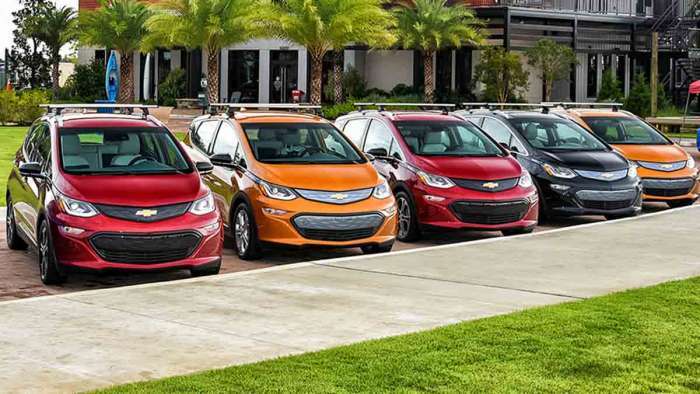
However, this trip is still exceptional for a couple of reasons. First, it was performed as a cannonball run by a solo driver. Even though 78 hours 59 minutes is not an impressive time even by modern electric vehicle standards, the fact that it was done by a solo driver might, on its own, be enough to make it a record setting time for an electric vehicle. Combined with the fact that the trip was completed using only public chargers, it is most definitely a record setting cannonball run time.
Regardless of records, this trip is still extremely important because undeniably proves that it is now possible to cross the country in a long-range electric vehicle while relying primarily on the public DC fast charging infrastructure.
Less Than Ideal Chevy Bolt EV Cannonball Run
This trip did a great job of establishing a baseline for what to expect when crossing the country in a 200-mile electric vehicle while relying primarily on the public DC fast charging infrastructure; however, I want to emphasize that this was still far from an ideal cannonball run.
First, thelondonbroiler made this trip solo, and the reason that is important is that rest stops are required. It’s simply not possible to do over 40 hours of driving without either having a partner or stopping to rest. From the video, it’s not entirely clear how long thelondonbroiler spent stopped while sleeping, but it looks like his overnight rest stops were about 6 hours each. Even if he did some overnight charging on Level 2 AC while sleeping, having a second driver would have easily shaved 15 hours off the total trip time. That’s important to consider when comparing this to the current EV cannonball record holders who were able to split driving time.
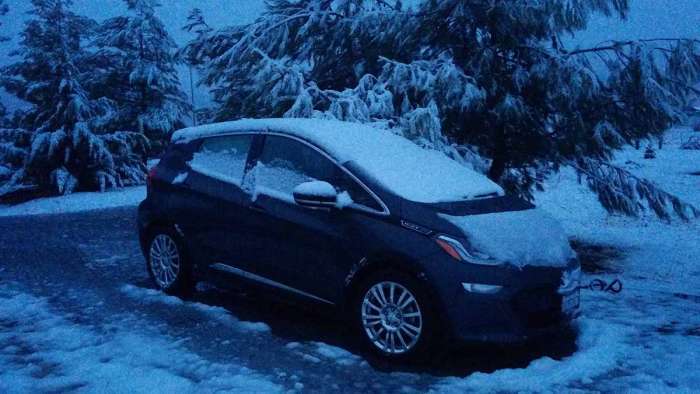
Second, this trip was made as winter weather was starting to set in. The fastest electric vehicle trips will be in moderate to warm temperatures where the hot and dry air more than make up for the additional energy expended by the car’s AC and battery conditioning. It was difficult to tell the exact energy efficiency throughout thelondonbroiler’s trip because he kept his original trip and energy consumption settings; however, it’s easy to see how driving through freezing temperatures, rain, snow, and wind would impact his overall efficiency. In fact, early on, it was clear that his Chevy Bolt EV rarely if ever saw its peak charging rates despite using 150 kW and 350 kW Electrify America chargers.
And that brings me to my third point, which is that thelondonbroiler wasn’t really maximizing his Bolt EV’s battery capacity. On numerous occasions, he let his battery charge well past 70%, which adds a lot of time to the charging session. Sometimes that charging behavior can be justified if the energy is absolutely needed to reach the next charger; however, many of the subsequent charging sessions started when the battery was at 40% or higher, meaning he could have cut the previous session short by as much as 20 or 30 minutes.
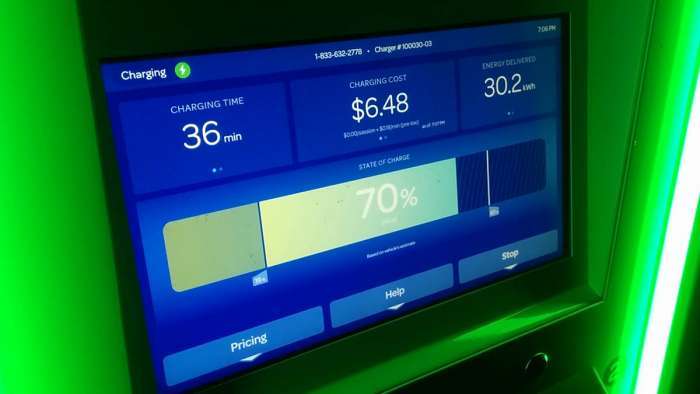
To be fair, some of that might be due to relying on A Better Route Planner (an electric vehicle route and travel planner) that I find to be excessively conservative for the Chevy Bolt EV. Later in the trip, more of the charge sessions appeared to be started at between 10% and 15% battery, which is far more ideal. Essentially, if a Bolt EV driver wants to make the fastest trip times possible, they need to be arriving at each charger with between 5% and 10% battery.
Forth, some of thelondonbroiler’s energy usages while charging were a bit suspect. On several occasions, he was running the heater and defogger while the Chevy Bolt EV was still below its peak charging rate step down. That can, when combined with battery conditioning, draw as much as 10 kW of power. In other words, it can steal nearly 20% of the Bolt EV’s peak charging rate. Those activities are best done after the charging rate steps down at around 50% battery. This not only enables the Bolt EV to use excess power from the charger to heat the cabin (essentially preconditioning the car for the next leg of the trip), it also conditions the battery temperature, bringing it closer to ideal operating temperature (an effect that actually cascades through future charging sessions). And if properly timed, it does all of that while not stealing from the Bolt EV’s peak charging speeds.
Finally, even accounting for the cold weather, there seemed to be some issues with the charging rate on thelondonbroiler’s Chevy Bolt EV. He was displaying information on Torque Pro (an app that reads data from the car’s internal sensors), and given the conditions on several occasions, there was no accounting for why he was seeing such a slow charging rate. It is possible that he made the trip without realizing that his Chevy Bolt EV might have had a failing battery cell or module. Since the trip, he posted this video showing that his car died with it displaying 10% battery still available. During the trip, he only had one charging session where his battery dipped below 9% (as displayed by the charger), so this is an issue that easily could have been missed.
What an Ideal Chevy Bolt EV Cannonball Run Would Look Like
Thanks to thelondonbroiler, we now have a baseline for a cannonball run in the Chevy Bolt EV, but how fast would an ideal cannonball run in the Chevy Bolt EV be? Even with ideal conditions, a majority of the time for a trip like this would still be spent driving (about 42 hours at the posted speed limit); however, that still leaves nearly 37 hours of room for improvement in areas such as charging time, downtime, and driving efficiency.
Even without knowing specifically how much time was spent charging, I can already identify at least 2 hours’ worth of charging time that could have been saved. Now, I want to emphasize this: My saying this is based on three years of experience driving the Chevy Bolt EV on long trips through difficult weather, and I think that thelondonbroiler was doing the best he could with the information he had available at the time. Essentially, hindsight enables me to see that he spent too long charging between gaps because on a number of occasions, he arrived at his next stop with significantly more than 10% battery. Still, we are aiming for the ideal, and simply focusing on the charging times without changing conditions or having a solo driver, we could get the Bolt EV’s time down to 76 hours and 59 minutes.
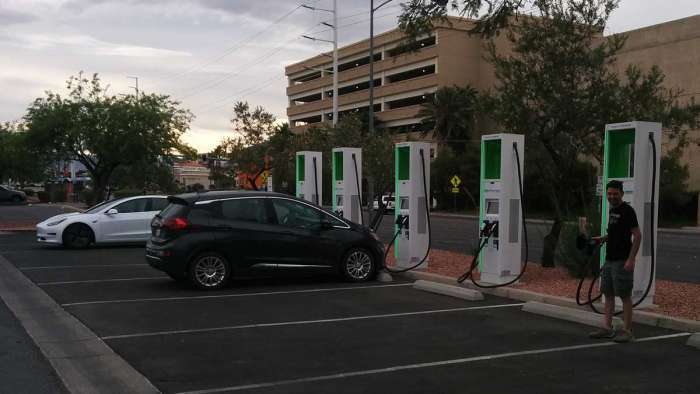
(Photo featuring Alex Venz)
Now, assuming that we could add a second driver (and it was the only condition we changed), that should save another 15 hours of time (assuming 5 hours spent down night every 24 hours). If this was the actual downtime and a second driver could be secured, the ideal Chevy Bolt EV cannonball run time under those conditions could be brought down to 61 hours 59 minutes.
But to be clear, the conditions during this drive were less than ideal. Most of the record-setting cannonball runs are performed in the middle of the year during ideal weather. The conditions for this trip weren’t particularly harsh, but they would be bad enough to result in 10% to 15% worse efficiency than ideal travel weather. Under ideal conditions, the 23 DC fast charging sessions that were identified for this trip should take less than 13 hours, which when combined with the 42 hours of driving time would result in a total Chevy Bolt EV cannonball run time of approximately 55 hours under ideal conditions. And that is before accounting for the faster average driving speeds that can be sustained when the roads are clear and dry. Based on some of the in-car footage, thelondonbroiler was on multiple occasions driving considerably slower than the posted speed limit due to rain or snow.
When I planned my own personal trip in the Chevy Bolt EV to New York in ideal weather, I estimated about 54 hours to complete the trip, so that 55 hour estimate seems valid. The one hour difference is most likely due to the fact that I was calculating for the shorter, more traditional route through Colorado. Another way of checking the math is that, under ideal conditions with consistent and regular access (every 100 miles) to faster DC chargers like those provided by Electrify America, the Chevy Bolt EV can maintain an average travel speed of close to 55 miles per hour including all stops. On the 2,912 mile route, the Bolt EV could theoretically manage a time of 53 hours if everything went right, and on the more traditional 2,825 mile route, it could manage a theoretical time of 51 hours and 20 minutes.
Conclusion
Regardless of the theoretical cross country cannonball run times for the Chevrolet Bolt EV, what we know is that a Chevy Bolt EV just crossed the country through inclement weather with a solo driver in just over 3 days while relying almost exclusively on the public DC fast charging infrastructure. Some in the electric vehicle community and EV media might proclaim that as fake news, but based both on my experiences and my knowledge of the public charging infrastructure, I believe this to be a conservative representation of what is possible (even under those conditions).
The 2019 Chevy Bolt EV’s range and charging speed were largely unchanged from the first Bolt EVs sold in 2016, and as I said in early 2017, the public charging infrastructure was the primary thing holding the Bolt EV back. The fact that a cross country trip in the Chevy Bolt EV is now possible along at least three different corridors while relying almost exclusively on the public DC fast charging infrastructure is proof of just how far things have come.
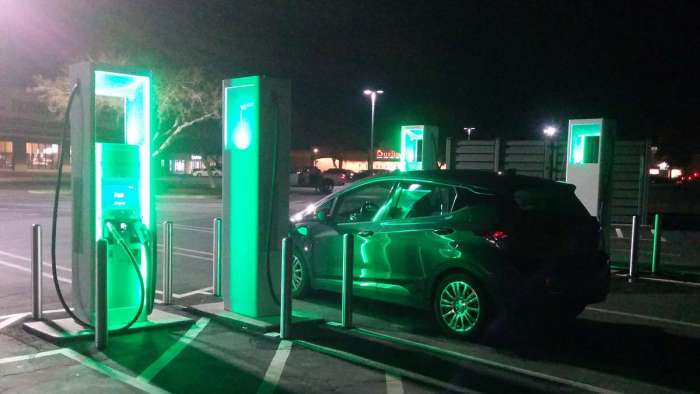
And yes, other average priced electric vehicles that have been released since the Chevy Bolt EV should be capable of completing this trip in a faster time, but that’s not the point. The Chevy Bolt EV did it, and it did it first.
See you in my next story where I discuss what I learned from my Chevy Bolt which was seating unplugged in the cold.
About The Author
Eric Way focuses on reporting expert opinion on GM brand electric vehicles at Torque News. Eric is also an instructional designer and technical writer with more than 15 years of writing experience. He also hosts the News Coulomb video blog, which focuses on electric vehicles, charging infrastructure, and renewable energy. Eric is an active member of the EV Advocates of Ventura County, a volunteer organization focused on increasing the widespread adoption of electric vehicles. You can follow Eric on News Coulomb Youtube, on Facebook at @NewsCoulomb as well as on Twitter at @eway1978.










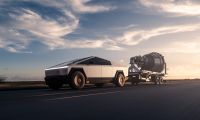

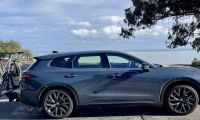
Comments
I made a solo trip from
Permalink
I made a solo trip from Denver, Colorado to Waterloo, Iowa last summer, just one week after buying 2019 Bolt. It's almost exactly 800 miles and I've driven it dozens of times before in vehicles ranging from cargo vans to my previous car, a 2014 Volt. I learned a LOT on this trip! It took me 20.5 hours to get there because of various problems at certain charging stations, but I made the return trip in just a few minutes over 17 hours. I was very pleased to read your estimate of 61 hours 59 minutes for the route mentioned here, because when I extrapolate the math from MY experience, it shows that I could have potentially done it in 61 hours and 57 minutes! Of course fatigue would have lengthened that time, but a second driver would have certainly made it possible.
In 8 months, in our Bolt, we
Permalink
In 8 months, in our Bolt, we have been
1) Oklahoma to Maine and a bunch of Northeaster States (4300 miles)
2) Oklahoma to Vermont (3400 miles)
3) Oklahoma to Iowa
3) Oklahoma to every surrounding state multiple times
4) Wife is currently on her way to NYC (2900 round trip)
5) And we are going to California right after she gets back
You can easily travel anywhere but ND, SD, MT, WY. And I agree, you have to stay on the bottom side on the battery, and only having 5-10% when you get to the next charger to make good time. Avoiding 50kW or less chargers would be my next suggestion, since the bolt can pull in the mid 50s you don't want to waste time and money on a slow 50kW capped charger that you'll only get mid to low 40s on. Get a $4 sub to Electrify America, it will pay for itself the very first time you use it in savings. Using the app to start the chargers is essential because it cuts down on wasted time by knowing which chargers to avoid and speeds up starting the charger.
There are some tricks to the Bolts heat and A/C that once adopted, you can use both without it affecting your range noticably. Never ever use AUTO adjust settings, or MAX either direction, it will destroy your range. Instead, set it to a temp, and adjust the fan if your hot or cold. Our car is either on 73 or 74 all the time. Our 110lb hound dog riding with us to Maine demanded having the car at a certain temperature , and having the A/C blasting full tilt wasn't doable. He was happy and comfortable with 73-74 degree air as long as the fan was blowing, and we found out that this doesn't crush the battery.